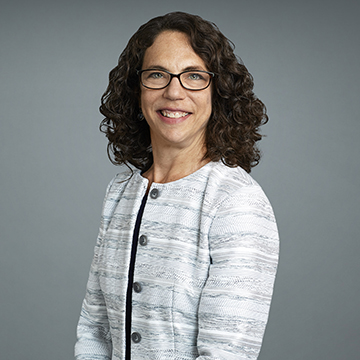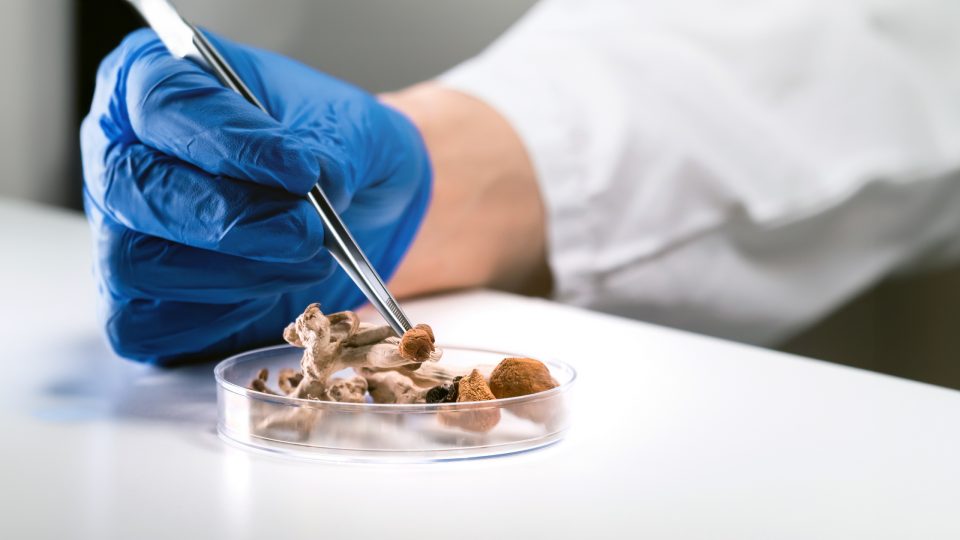In April 2021, Naomi M. Simon, MD—an internationally recognized expert on anxiety, stress and prolonged grief—gave a talk entitled “The Mental Health Impact of the COVID Pandemic: A Major Life Stressor” as part of a video lecture series produced by the National Institutes of Health COVID-19 Scientific Interest Group. Dr. Simon covered topics including the pandemic as a life stressor; current knowledge about its relationship to stressor-related conditions; COVID-specific factors that increase risk for negative mental health outcomes; and therapeutic approaches to supporting mental wellness after the death of a loved one.
The lecture expanded on themes Dr. Simon had explored with two colleagues—Charles R. Marmar, MD, the Lucius N. Littauer Professor of Psychiatry and chair of Psychiatry, and Glenn Saxe, MD, professor of adult and child and adolescent psychiatry—in a viewpoint published in October 2020 in the Journal of the American Medical Association. The paper was among the first to highlight and propose a set of public health strategies to mitigate one of the widespread mental health impacts of the pandemic: the toll of mass bereavement.
“Our previous research on traumatic stress and prolonged grief led us to recommend an approach involving three distinct and interrelated strategies based on graduated levels of risk.”
Naomi M. Simon, MD
“Our previous research on traumatic stress and prolonged grief led us to recommend an approach involving three distinct and interrelated strategies based on graduated levels of risk,” Dr. Simon explains.
A Tiered Response to the Impact of Mass Death
As described in JAMA, effective mental health response to the losses of the pandemic requires a tiered approach. After a death occurs, PCPs can use validated screening tools—such as the PTSD Checklist and the Prolonged Grief 13 questionnaire—to identify family or friends who are at highest risk of developing mental health conditions.
For individuals identified at risk, or who have acquired disorders related to their loss, the goal is to deliver evidence-based interventions to return pathological manifestations of bereavement to their normal grief trajectories. Ideally, such interventions could be implemented within primary care or community settings. However, an additional role for primary care is to identify individuals with highest risk and complexity, who should be referred to a specialist.
“One of the challenges of the pandemic has been its disruption of social networks and rituals that can help people cope with death and bereavement. Clinicians can help bereaved families find creative ways to safely honor traditions, memorialize the deceased, and improve social support.”
This strategy requires that training resources be offered to PCPs and community mental health practitioners about grief and traumatic distress and their variable course. Such training should include tools for assessing and treating bereavement-related mental health conditions.
“One of the challenges of the pandemic has been its disruption of social networks and rituals that can help people cope with death and bereavement,” Dr. Simon observes. “Clinicians can help bereaved families find creative ways to safely honor traditions, memorialize the deceased, and improve social support.”
A Roadmap for Treating At-Risk Children via Telehealth
The pandemic’s disruptions have been especially challenging for two groups of children: those with mental health disorders, and those at risk of maltreatment by family members. Clinicians and caseworkers have often been forced to rely on video chats rather than home visits. Meanwhile, the pandemic has created conditions that can exacerbate a child’s behavioral problems or their vulnerability to abuse.
“Many families were on edge before COVID-19 started, but now they’re facing issues ranging from added financial pressures to being in close proximity 24/7.”
Glenn Saxe, MD
To help mental health clinicians and caseworkers navigate this difficult terrain, Dr. Saxe and colleagues in the Department of Child and Adolescent Psychiatry developed a series of 11 tip sheets for remotely administering Trauma Systems Therapy (TST)—a model pioneered by Dr. Saxe and widely adopted by child-welfare agencies—in a COVID-19 context.
“Many families were on edge before COVID-19 started, but now they’re facing issues ranging from added financial pressures to being in close proximity 24/7,” Dr. Saxe says. “COVID has created a whole new landscape. We’re trying to create a roadmap for moving forward.”
Disseminated through a national network of centers that use TST, the tip sheets offer guidance on topics such as problem determination; assessment of environmental stability and safety; building emotional regulation skills; and keeping children and caregivers engaged in the therapeutic process.
“Some of the most crucial advice concerns how caregivers can take care of themselves and their teams,” Dr. Saxe adds. “Leaders should assure their staffs that efforts are being taken to protect them. Administrators should share information in a transparent way. We all need to take our own emotional temperature, identify activities that help us cope, and check in with each other regularly.”







